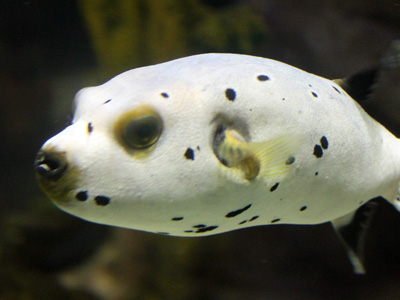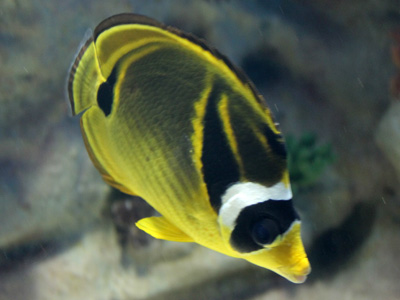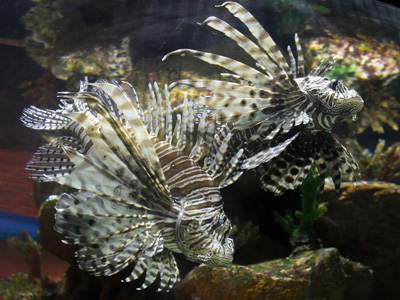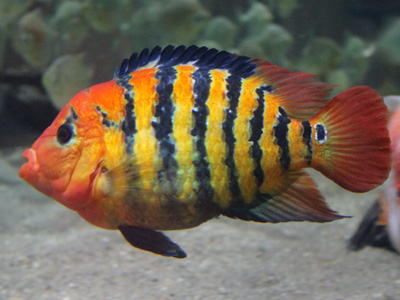Pharyngeal Jaws and Green Moray Eels
Did you know that there are animals at the Greater Cleveland Aquarium that have more than one jaw? Moray eels have been known to have a second jaw, or pharyngeal jaw. The aquarium is home to several moray eels, many of which you can find in the Shark Exhibit swimming right along with the sharks and other fish.

Green moray eels are a pretty amazing animal, full of secrets. Just about ten years ago researchers discovered that these curious animals actually have a second jaw. This jaw, known as a pharyngeal jaw, is how they are able to eat. Most fish use suction to swallow. They expand their mouths to create negative pressure. This negative pressure causes water and prey to rush into their mouths allowing them to swallow their prey. Moray eels do not have this ability. Instead, they lie in wait in caves and crevices for their prey to swim by. They then burst out and grab their prey with their oral, or first set, of jaws. Their pharyngeal jaws then move forward to grip it. They can then move these jaws backwards to swallow their prey whole. They typically eat fish, shrimp, squid, crabs and octopus.

Another secret that green moray eels have is that they are actually brown! Their bodies are covered with thick yellow mucus that gives them their vibrant green color. This mucus protects the eels from parasites and infectious bacteria.
Green moray eels are found along the western Atlantic and into the Gulf of Mexico. They’re frequently found in the Bahamas and the Caribbean and been found as far south as Brazil. When full grown they can get to be 8 feet long and weigh as much as 65 pounds. Green moray eels have few natural predators once they reach full size, although smaller eels must look out for sharks and other large predators.

Next time you are at the aquarium make sure you look for the green moray eels. They are nocturnal in nature so they tend to spend a lot of the day hiding in the rocky structures around the exhibit. You’ll see their heads and part of their bodies sticking out. However, we often see them swimming around throughout the day. They even like to visit the divers when we are in the exhibit. Also, be sure to visit the aquarium on a Sunday, Tuesday or Thursday at 3:30 to watch the shark feed! The eels are often seen coming over for a snack as well. Look fast! Maybe you’ll just catch that pharyngeal jaw in action!























